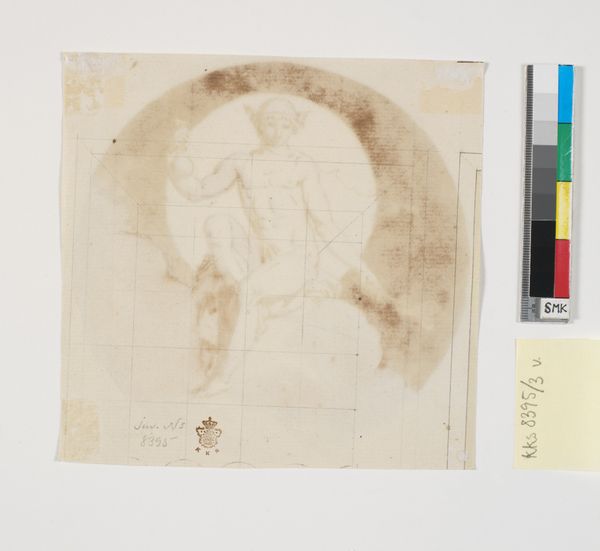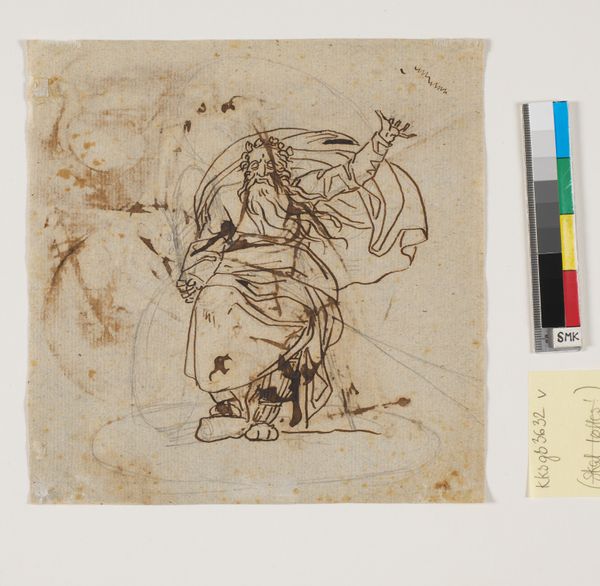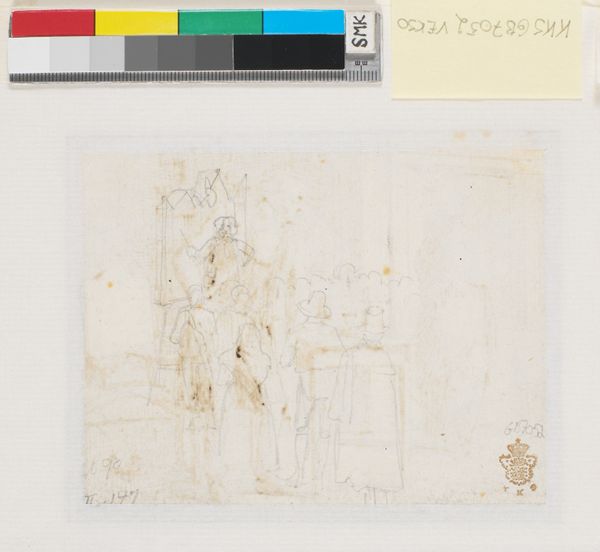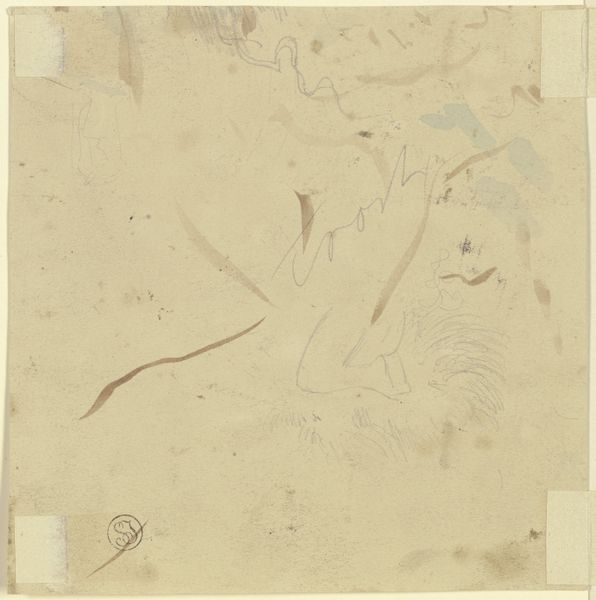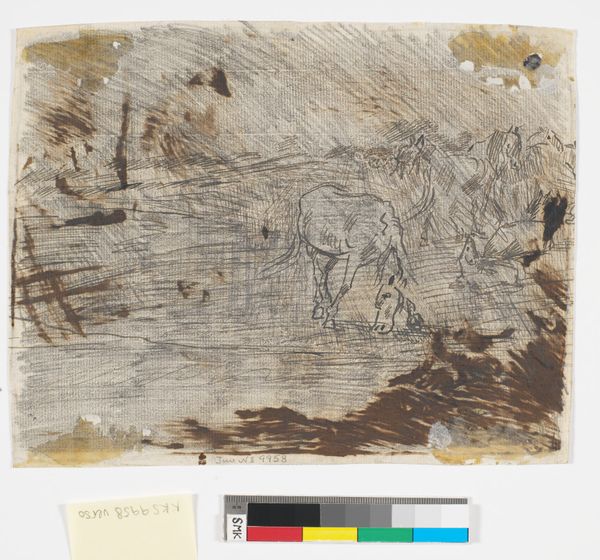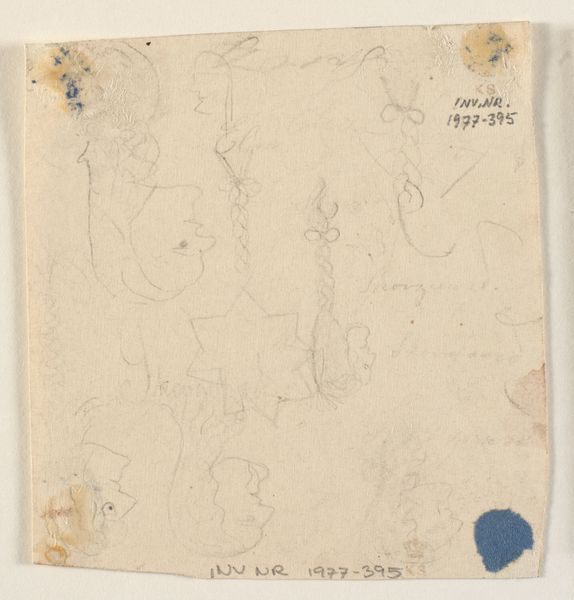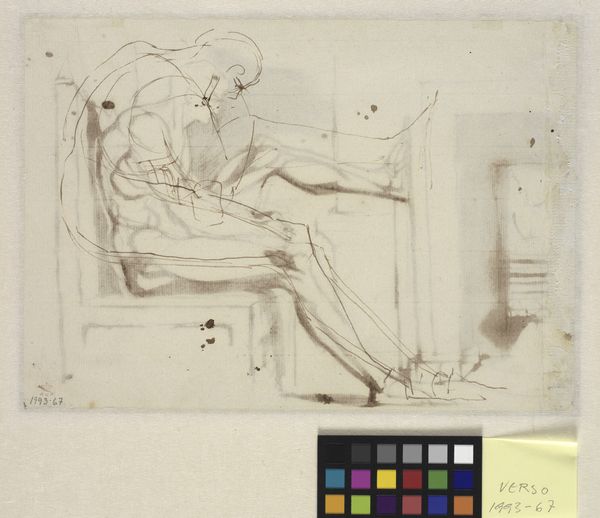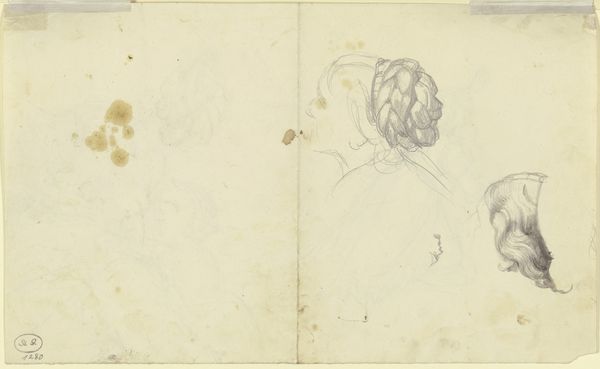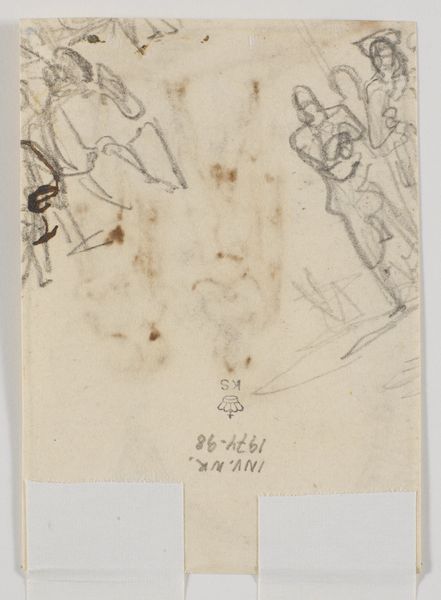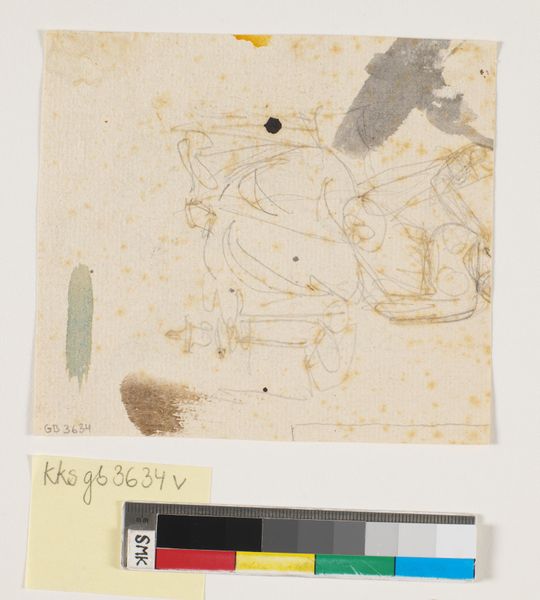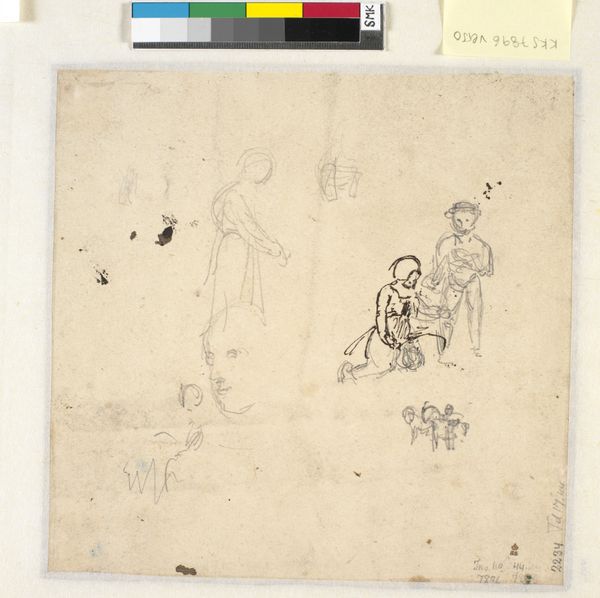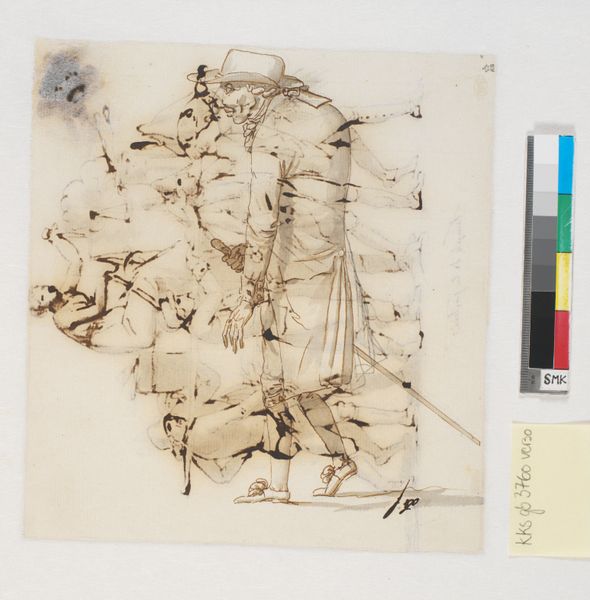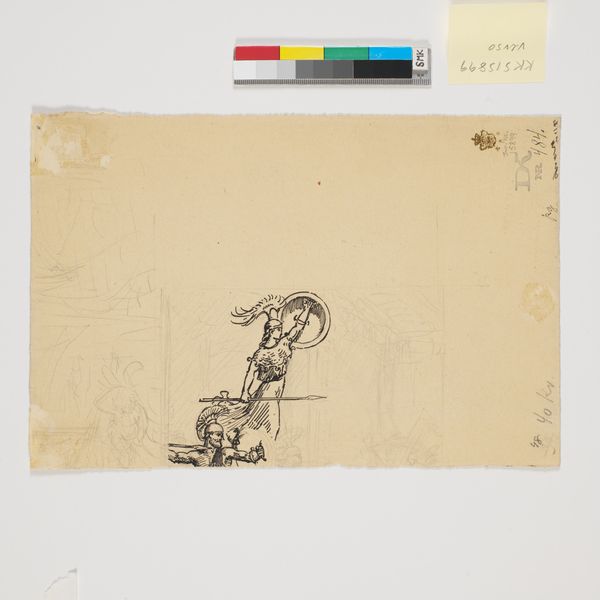
Dimensions: 151 mm (height) x 146 mm (width) (bladmaal)
Editor: This drawing, titled "Svagt rids af en g\u00e5ende figur," which translates to "Faint Sketch of a Walking Figure," is by Nicolai Abildgaard, dating from between 1743 and 1809. It’s rendered in ink on paper. I find the linework quite intriguing; it’s so sparse, almost hesitant, yet manages to convey a sense of dynamic movement. What catches your eye, and how do you interpret this piece formally? Curator: The deliberate economy of line is precisely what compels. Notice how Abildgaard employs a subtle choreography of strokes, strategically thickening or thinning the ink to suggest depth and volume, albeit fleetingly. The composition avoids stark contrasts; instead, a tonal unity emerges from the layering of faint washes. Consider the formal implications: Does this subdued palette serve to emphasize the ephemeral nature of existence, the transient quality of human form captured in motion? Editor: That's fascinating. The tonal unity definitely creates a sense of ambiguity. Do you think the lack of strong definition contributes to a feeling of unfinishedness, or is it a conscious choice related to the figure's implied movement? Curator: I propose it is a sophisticated choice that reinforces the work's thematic content. The figure is not presented as a static object to be dissected, but as a fleeting moment caught mid-stride. Abildgaard harnesses the inherent qualities of his materials—the fluidity of ink, the absorbent nature of paper—to evoke this sense of transience. Consider how the negative space surrounding the figure actively contributes to the visual dynamic. The figure is a form, and it is a form emerging out of nothing. Editor: I hadn't considered the negative space so actively, but I see how it amplifies that sense of emergence. Thanks, that gives me a lot to think about regarding Abildgaard’s formal decisions and how they communicate his subject. Curator: Indeed. Close observation reveals the inherent eloquence within even the faintest of sketches. It reminds us that the power of art lies not necessarily in meticulous rendering, but in the articulation of visual relationships.
Comments
No comments
Be the first to comment and join the conversation on the ultimate creative platform.
